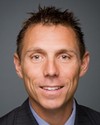My name is Steve Garvie. I'm 53 years old. I was diagnosed by Dr. Paul O'Connor, head of the MS Clinic in Toronto, at St. Mike's Hospital. He diagnosed me with secondary progressive MS. This was approximately ten years ago.
Before the procedure on January 29, 2010, I was in SCAPD housing. That's government-funded housing where the caregivers come in three times a day. They help me shower. At four o'clock in the afternoon I was so fatigued that I sat in a lift chair. I couldn't move. They came in and cooked my supper. They fed me. They did my dishes. Came back in. They washed me.
People have pride. I had none. My life was taken away from me. These people gave it back. I don't know how you can put a wait on that. I'm a human being.
They helped me shop for groceries. They cleaned my apartment. I'm a self-motivated person. Having these things done for me is worse than a jail sentence. I was unable to walk without the use of an aid, a rollator or an electric wheelchair. As a man, that part of me was no more. I couldn't share my love with the person I loved. That was taken away from me by MS. It made me totally dysfunctional.
I took anti-depressants. That helped me get through my life. I don't have this thought written down, but I'll tell you right now I tried to commit suicide twice in the early stages. It wasn't selfish—I was trying to make sure my girls, my three daughters, didn't have to go through this. Pride does that to people, and a lot of people die every year because of this. The time is so important.
I've been six months fixed. In that six months I'd like to know how many people have died needlessly, how many people have had more disability because of what happened with the MS. More disabled, more disabled, more disabled. There's no need. None.
I saw the W5 program online. I didn't see it originally. Someone told me about it. I printed off the protocols. I went to my family doctor, Dr. Kiss, out of Barrie, Ontario. We discussed the blocked Doppler that they were talking about. I wanted to find out if I had that venous insufficiency. She was good enough to book me immediately to Dr. McDonald's clinic, where they did the Doppler scan. There's no pain involved with that. A little goop on your neck and they can show you what's what along the way. And they know exactly what they're doing.
They were good enough to book me an appointment with Dr. McDonald. I went and saw him. My jugulars were unquestionably blocked. I'm sorry for calling it an operation; it's not. It's a 45-minute procedure. Painless. Life-giving. It gave me back what I lost, and I can't thank them enough for that. I really can't. They're my heroes. I think you should let them be heroes for everybody else.
My CCSVI was treated with a balloon angioplasty, a procedure that's done every day of the week. No tests necessary.
My left hand came back to me on the OR table. It was numb; I couldn't use it. I shook the nurse's hand. My head was turned when they did this. I said, “What have you done to me? You've done something.”
Dr. Kiss said, “Why?”
I said, “My hand works. I can lift my left leg.”
I couldn't believe it. I went into this procedure with the thought of stopping progression. I'd learned to deal with the other things. I got my mind straight on the suicide. I didn't feel that I was worth a whole lot, not with what I was going through. I was getting worse every day, every month, every minute. Secondary progressive MS does that to you, and so does primary. You don't get better, you get worse, and that's all you have to look forward to.
They say that this does not help people with secondary progressive MS. I beg to differ. Please look at the evidence. I'm right here.
I have no need for the care any more. I left that apartment three months ago. I wash myself. I cook my own dinner. I can live my life. The housing is gone. I'll leave that apartment at the end of July. I left it three months ago, and I haven't been there except to move stuff.
Dr. McDonald called me and asked me to come here, along with you--






